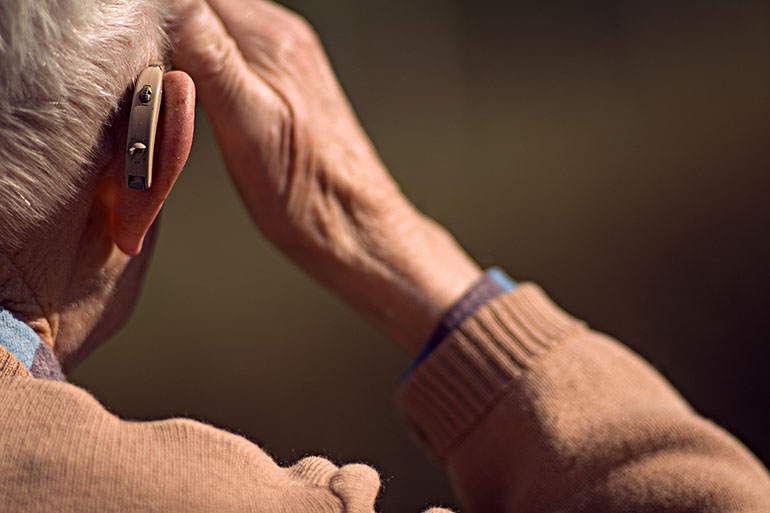Hearing aids that can cost more than $2,000 apiece are only slightly more effective than some over-the-counter sound-amplification devices that sell for just a few hundred dollars, according to a recent study.
The study bolsters legislation pending in Congress, which would have the Food and Drug Administration set regulations for cheaper over-the-counter products and is designed to make the devices more widely accessible and safer. Consumers with mild to moderate hearing loss would be able to purchase the devices without a prescription and without a medical exam, knowing they meet federal safety standards.
For the study, researchers compared how well 42 older adults with mild to moderate hearing loss repeated sentences spoken in the presence of background noise. The researchers first tested their ability to understand the speaker without any devices. Then they tested the subjects successively with a hearing aid and with five “personal sound amplification products” sold over the counter.
 Insuring Your Health
Insuring Your HealthThe hearing aid used in the study was a brand commonly dispensed in audiology clinics. The personal sound amplification products (PSAPs) that were selected either had the best electroacoustic properties or were commonly available in retail pharmacies. PSAPs perform like hearing aids but can’t be marketed as hearing aids because they don’t meet standards set by the FDA.
The results, published this month in JAMA, found very little difference between the hearing aid, which costs about $1,900 per ear, and some of the PSAPs, which mostly cost between $300 and $350 each.
On average, study participants were able to accurately repeat about three-quarters of the words spoken to them without using any device. Using the hearing aid boosted their understanding to an average 88.4 percent. And four out of the five PSAPs were nearly as effective as the hearing aid, with average word understanding ranging from 81.4 percent to 87.4 percent. The fifth PSAP performed poorly: People could hear better with their naked ears.
Age-related hearing loss is a common problem, but only about a quarter of the roughly 30 million people who have it use hearing aids, said Nicholas Reed, an audiology instructor at Johns Hopkins School of Medicine who was the study’s lead author.
“That’s a lot of people who aren’t getting in through the door,” he said.
Cost is a deciding factor for many consumers. Medicare doesn’t cover hearing aids, nor do most private health insurance plans.
Identical versions of the bipartisan Over-the-Counter Hearing Act of 2017 were introduced in the House and Senate this year. The text of those bills has been added as an amendment to the FDA Reauthorization Act of 2017, a bill that is key to FDA operations because it sets the government’s system for collecting fees during the drug approval process.
Not surprisingly, hearing aid manufacturers and distributors are against the bill. So are gun owners, who claim that regulating hearing amplifiers, which some hunters use to detect game, is in effect a way to regulate hunting and undermine their Second Amendment rights.
Reed said that by requiring the FDA to issue regulations on over-the-counter hearing aids, the proposed amendment would improve the products sold. Many of them, he said, are not effective and some are dangerous because there’s no control over amplification levels.
“When it gets to a certain amplification, it will just blow your hearing out,” he said. “Over-the-counter hearing measures would regulate these devices and force them to meet standards.”
Please visit kffhealthnews.org/columnists to send comments or ideas for future topics for the Insuring Your Health column.
KHN’s coverage related to aging & improving care of older adults is supported by The John A. Hartford Foundation.
KFF Health News' coverage of aging and long-term care issues is supported in part by The SCAN Foundation.







